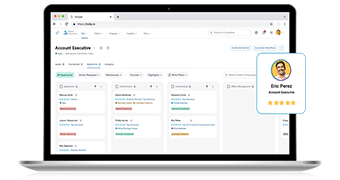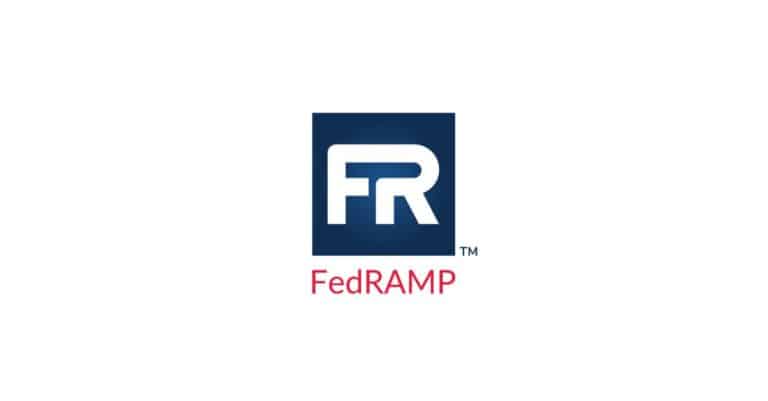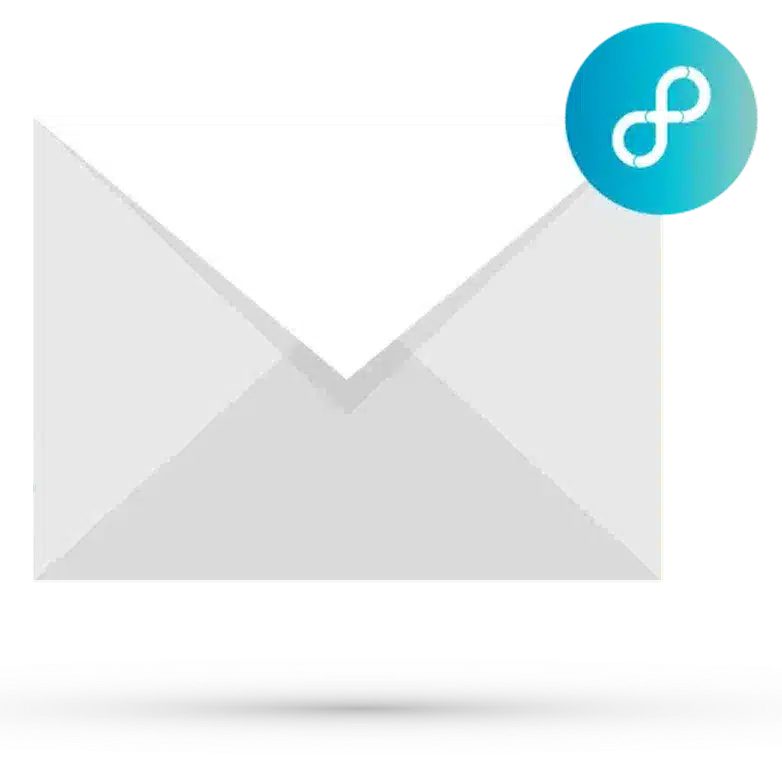Argyle Moderator 0:00
Hello and welcome to the Argyle HR leadership forum. My name is Nick with Argyle, and it’s great to have everyone joining us today. I would like to introduce our moderator, Janet, a Hoffman, former co-president of the NYC chapter, SHRM, and leadership coach. We’re excited to have Janet and our panelists for a panel discussion titled Talent Intelligence: Unlocking talent success. Welcome, Janet. Over to you.
Janet A. Hoffmann 1:22
Thank you, Nick. It’s a pleasure to be here. As you said, we’ve got a great topic today, talent, intelligence, unlocking, talent, success, and we’ve got a great group of panelists that are going to share some of their insights. But before we get into that, I’d like each of them to take a minute and introduce themselves. Jenny, would you like to start Sure?
Jenny Cotie Kangas 1:44
I’d love to thank you. Janet, my name is Jenny Cotie Kangas. Many call me JCK, and I am a director of talent center transformation at Eightfold. Prior to Eightfold, I led HR and talent acquisition teams, transitioning then into HR tech, and now I am at Eightfold and very excited to be here today.
Janet A. Hoffmann 2:04
Awesome. Donald, how about you?
Donald Avery 2:07
Yeah, thanks pleasure to be here with everyone, and thanks for carving out your time to spend with us again. I’m Donald Avery. I’m the Vice President of Human Resources and Business Strategy for a major Fortune 200 company in Chicago, where I’ve worked, also in New York, New Jersey, Philadelphia and Connecticut. And I work with executives as well as college students. They help keep me young, and then also it give me an opportunity to kind of share knowledge and expertise as well as continue with my learning. Thank you.
Janet A. Hoffmann 2:41
Thank you and Cliff,
Clifford Rich 2:44
Hey, good morning. Thank you. Janet, happy to be here with everybody. Cliff Rich, dialing in from Dublin, Ohio, outside of Metro Columbus, with Cardinal Health as the current director of HR technology. Prior to my current role, I held several different roles within it and was excited to speak with all of you today. Wonderful.
Janet A. Hoffmann 3:03
Thank you. Cliff. Well, let’s jump right in and get started with our first question. And how do you define talent intelligence, and why is it important? Donald, how about you? You want to kick us off there?
Donald Avery 3:18
Yeah. Thank you. Yeah. That’s as far as talent intelligence is concerned, it’s it’s a hot ticket item right now, as many of us know, in light of what’s going on right now in corporate America, there’s so many different changes, but a few items that I wanted to bring to everyone’s attention, and what I consider this very competitive market and landscape is it is more of an employee market than ever before, and good, talented people have choices. In addition, it is good to have assessments. However, there are some assessments that bring bias to the table, and they can also take time to complete and determine, you know, just what to do, also resulting in companies losing talent. Lastly, also in looking at success, you know, look at it two ways, successes and as well as failure, the failure rate, what is your turnover when it comes to new employees? As well as determining if there’s anything internally, from a cultural perspective that needs to be fixed in order to retain talent, having people who can truly interview by asking the right questions, etc, to get to the core of the capabilities that’s critically important today, in today’s market. Overall.
Janet A. Hoffmann 4:30
Wonderful. Thanks. Cliff, how about you? How would you define talent intelligence and why is it important?
Clifford Rich 4:36
so I bring my technology partner to HR to the equation here. So, but I do you know, hear that, hear the conversations, often talent intelligence, I think, from my point of view, both looking internally to make sure that you’re doing active development and succession planning so you’re bubbling up talent that you. May not be in, may not think of in their current role as the one to move into a next chapter, whether that’s a lateral or promotion. So having precise analytics and outcome and reporting on those skill sets, if you can engage people internally, super important, and just proactively engaging in those conversations, having them on succession plans, and thinking about where business partners have critical gaps in their bench. So that’s it. That’s internal, I think external intelligence. A lot of thinking about passive candidates, how you engage them, whether it’s platforms like LinkedIn or indeed, or other other options that are out there. So that’s kind of my perspective in a nutshell.
Janet A. Hoffmann 5:47
Thank you. Jenny,
Jenny Cotie Kangas 5:50
So here at Eightfold, we actually have created our own definition of talent intelligence, just because there’s so much uncertainty out there in the market as to what this means, and so I’m going to be looking over here, because I want to make sure that I don’t get it wrong. And my leader, Jason Serato, is actually blood who helped to end this definition. So for eightfold talent, intelligence is purpose built AI insights and automation derived from your enterprise data, market data and user interactions to gain a dynamic understanding of talent in the context of work across all stages of the talent life cycle.
Janet A. Hoffmann 6:31
Awesome. Thank you. Thank you. A lot for us to think about. And you know, with any kind of new technology, there’s always questions and challenges. So my next question for the group is, what’s one of the most significant challenges that you’ve seen related to talent, intelligence? It is a competitive landscape. And how would you address that challenge Cliff you want to, you want to start us off on that one?
Clifford Rich 7:00
I think it goes, goes back to having good data, especially for your internal candidates. If you’re just filling out standardized forms, whatever those fields may be, you may miss, or somebody may not even think to put in a specific experience that they have. And then when you go to look across the enterprise for people that have a skill or help fill a need within the team, you’re totally blind to that, and you miss out on internal talent. So I think the better your data can be, and the better or the more frequently HR HR teams or HR business partners are engaging with their business partners to assess where the gaps are and be proactive about it. I think that’s where you’re going to have a winning strategy.
Janet A. Hoffmann 7:47
Great. Jenny, you want to weigh in on that question.
Jenny Cotie Kangas 7:52
Absolutely I’m going to just follow what Cliff said, because he’s absolutely right. I think an additional significant challenge we’re talking about talent intelligence is the fact that when it comes to humans, we don’t teach people how to understand their skills in the context of work. And if we don’t have that mirror or that ability to reflect back right, we can’t actually collect the dots to connect the dots downstream, whether it’s in a system of intelligence or in a system of record or what have you. And so what a lot of organizations are turning towards is, how do we democratize the ability to be able to understand and assess those skills, making sure that the human almost has a mirror in front of them, they can understand those skills in the context of
Janet A. Hoffmann 8:33
work? Awesome. Donald,
Donald Avery 8:35
yeah, to kind of detail what my colleagues were saying there, it’s really interesting. When you take a look at what’s going on right now. A lot of AI tools that are being used out there are still kind of going through the metamorphosis and defining themselves, if you will, whether it be when it comes to the people component or the business component. However, the one thing that I notice here is that, and I’ve been talking to our leaders about this, I’m glad to see some of the leading edge companies are not using tools like this as the sole criterion when it comes to selecting people, because it is evolving. And one thing we’ve done with one of our organizations, or many of our organizations that we have, is to make sure that when we’re utilizing tools like this, that there is more than just one component, you know. And I think as we continue to use tools like this to make sure that we’re taking a look and making sure that we’re weeding out any type of biases, whether it be cultural biases, racial biases, gender biases, you name it, across the board,
Janet A. Hoffmann 9:42
great. Thank you. Thank you so kindly for our next question, I wanted to kindly share with us some ways that you’ve seen organizations elevate their talent intelligence capabilities to really gain a much deeper insight into their workforce. Jenny, do you want to start us off with that one
Jenny Cotie Kangas 10:05
you have you start off with the hard one. What are some ways that you see an organization to elevate their talent, intelligence capabilities, to gain deeper work insight? You know, I have the pleasure of working with very, very large organizations on a daily basis, and many of them are going through transformation. And I think some of the best organizations that are going through these changes, they have absolute clarity to what their problems are and like what their mission is that they’re trying to accomplish with this data, right? Because we shouldn’t just be trying to capture data for data’s sake. When we look at the data, ironically, it shows that when there isn’t that kind of mission, driven purpose for why people are doing this, that why behind the what, the success rates really plummet. And so I think some of the organizations that I’ve worked with, I was just with one on site yesterday in Cleveland, they have absolute crystal clarity is, here is our problem, here is our business problem, and here is how we hope to solve that, with talent intelligence in order to solve those real, real life problems.
Janet A. Hoffmann 11:14
Awesome. Thank you. Donald, what are your thoughts
Donald Avery 11:18
While I was listening to Jenny, the first thing that came through my mind was I, as I kind of talked with some of our leaders over the last maybe five to seven years. One thing that resonated with me, what she said is that, when you look at organizations now, especially what’s happening now, the oscillations of change 10 years ago used to be wide and broad, those oscillations now are very, very narrow, meaning that when change takes place, I mean, it’s rapid, it’s rapid change as well as you can build off of those capabilities too. And then I also use the term don’t throw the baby out with the bathwater, if you will. Meaning that an idea that you bring up now because of oscillations of change. Guess what? 330 days, 90 days a year, they could be extremely relevant.
Janet A. Hoffmann 12:10
Awesome cliff. How about you? Yeah. So
Clifford Rich 12:13
I’m going to keep coming back to this theme of assessing internal talent. So we’re a workday shop here at Cardinal Health and the HR team has had folks put their skills into workday. They’re able to draw analytics and insights from that shared with business partners and also, you know, inform some of those processes I talked about earlier with succession planning and also career development. But I think something that has elevated that experience internally through using workday and some of our other technology tools we’ve done, we’ve rolled out something called gigs so that allows people, internal folks, to look out there, across the enterprise, see what other teams are offering as a short term. Think of it as a shadow shadowing or a stretch assignment. And there’s a rank order based on their skills of ones that are probably a likely match for their interests and the ground. So it’s a great opportunity for talent to kind of try before they buy. Being with other teams, getting exposed to different leaders, different processes, different technologies, and only serves to benefit the broad, broader goals for the enterprise with talent retention and setting up people for moving, moving around within the organization, because all of us in the current environment want to hang on to those people that we know are really high performance or have the technical or business acumen that we need to be successful. So that’s just one, one way I’ve seen us be successful in using technology to elevate, elevate that experience. Great. Thank
Janet A. Hoffmann 14:01
you. So you know, anytime we have something new, we like to get some practical examples or tools or maybe strategies. So what are some of those tools or strategies out there that you see as game changers for streamlining talent and talent, talent intelligence, and maybe even some examples of how you’ve seen them applied. Donald, how about you?
Donald Avery 14:27
Yeah, that’s really interesting question, and that again, when you take a look at all the various tools that companies have used over the last 15 years or so, or 20 years, a lot of the tools, my perspective, this is just my my general perspective is that a lot of tools were had more what I consider being sometimes a negative bent towards how do you wean someone out? You know, when you take a look at candidates coming into an organization, that’s very seldom. That any person that you bring on board has 100% of all the criteria that you’re looking for, but what I try to look for is, if a person has 60% of that, are they teachable and trainable? But the tools that I’ve used, and it’s amazing that over time, these tools have been invaluable, and I still use them today, and have developed pretty good expertise on them, and they’re simple for people to understand and use. Obviously, you got Myers breaks and things of that nature, but the ones that I look at when it comes to the people component are Strength Finders and emotional intelligence, those two tools there people are more receptive when you’re giving them constructive feedback, and they’re more ready to listen for constructive feedback. So I think it’s really important that companies utilize that information and the data that they use, not to necessarily, if you will, beat someone up. But how do you strengthen someone going forward? Yeah, yeah. Awesome.
Janet A. Hoffmann 15:59
Cliff. How about you? What are some specific tools or tool types or strategies? So
Clifford Rich 16:06
Let me start with strategies, and then I’ll come back to tool types and totally agree with what Donald said for the importance of being aware of bias in the hiring process and making sure that you’re kind of a diverse panel, and you’re also seeking diverse, diverse candidates. I think speed to speed to decision, speed to offer is super important, because if you have somebody that’s actively looking for a role, it’s probably likely that, if they’re top talent, that they have a couple of options open to them, right? So if your hiring process is kind of wonky and disjointed and it’s not a great experience, you know somebody else could beat you to that offer. You come in a week or two later and that candidate says, well, sorry, I already had, I already had an offer from your competitor, and then you’ve lost out, right? And then your business partner is going to come to you and say, like, hey, what? What went wrong with that? Like, we were aware of somebody you had that seemed like an ideal fit, and now we’re back to square one. So nobody wants that scenario. So I would, I would suggest that HR leaders engage with their current vendors that they use, whether that’s they have a relationship with, indeed, or LinkedIn or other platforms, to make sure that you are operating at the top of the license that you have like, make sure that you’re getting the most out of that relationship, because there’s so frequently changes in the platforms that if there’s not a proactive conversation going on with your vendor, you may be missing out on enhancements to the tool set that will increase the candidate experience and get you to that you know, speed to offer that I mentioned earlier. So just a couple AI tools that are out there, I think again, to echo what Donald said, important to have a human in the loop where AI helps with informing the slate, helping you narrow down that candidate funnel, if you will, really quickly, and then have a human interact With those the narrowed, the narrow slate, but a couple, a couple ones that probably our audience will be familiar with are workable, humanly paradox, manitow and HireVue and fetcher. These are all ai, ai tools for talent, talent recruiting that I think organizations are finding success with
Janet A. Hoffmann 18:42
awesome, awesome. Jenny, how about you?
Jenny Cotie Kangas 18:46
Yeah, so I may be potentially slightly biased in that, because I have to work for a tech talent intelligence company, right? But what I’ll say is a little bit different about what we do. So as I mentioned before, democratizing that ability to reflect back your skills in the context of work is really important if you want to do any of this stuff downstream, because we do not teach people how to understand their skills, right? And so you don’t have that level playing field in the front, whether it’s an internal employee or a candidate. That’s, you know, we’re going to have problems downstream. So that’s what Eightfold does. It puts a mirror up to a human and reflects back their skills in the context of work, democratizing that, making sure that people can see what they can be, connect the dots to their skills and then, different from some of the other technologies that are out there. It’s a talent intelligence platform. It sits on top of your historical systems record. So Cliff mentioned he uses a workday. So April took on top of Workday as your front door indoor work day, right? So we start the requisition in the workday, and then from start almost all the way to finish, all those various traditional point solutions, scheduling events. CRM, they’re all embedded in that experience within eightfold, which is great, because we get data for every point of that talent lifecycle, which is really important, because if I don’t have data for what’s working or what’s not working, I always say success leads clues, and can you find those clues in your existing strategy? Right? Because when we can see those clues, we want to sharpen our strategy and reverse engineer in a way that’s going to solve things like that. And so yeah, talent intelligence platform. And the other piece with when we’re talking about skills, we’re talking about AI, when we’re talking about the system of record. So that historical bottom part, you can’t infer skills in a system of record. The human who’s involved in that profile has to consent to the skills being added, and that can be really tough, because if that human doesn’t understand how to anchor those skills, we’re not going to collect those up so we can connect them downstream. And so when you’re working in a system of intelligence, you can infer skills, you can look at adjacent skills, you can translate skills. There’s a lot of different things that you can do in the background, which I think are really helpful to come alongside of our talent acquisition leaders and hiring managers managers, and help them get this right.
Janet A. Hoffmann 21:22
Awesome. Thank you. Thank you. So you know, whenever we have obviously a new tool, so to speak, or many new tools, or we’re pulling tools together, or taking a different perspective on things, it can feel overwhelming, I think, for people that are not necessarily familiar with the tools or the approaches. So I’d love to hear from each of you. What’s one thing that leaders can do right away to get started? You want to start us off with that one? With your recommendation?
Clifford Rich 21:56
Yeah, I think it starts with thinking about a demographic that is most important to your business. So for example, at Cardinal Health, we have a significant footprint in distribution centers for sending out medical and pharmaceutical supplies. So a lot of our talent are warehouse workers, and they tend to gravitate towards mobile phones, so if you’re applicable, think about this for whatever your business is. If you’re not reaching your demographic, where they live, then your your efforts are kind of over before they’ve begun. So I think really understanding that target candidate, and then shaping your campaigns to go after talent in those areas is super important. And then once you have that strategy, then you can fold in and underpin it with technology, whether it’s what Jenny mentioned with Eightfold, with some of the capabilities I mentioned with Workday, whether it’s some of the other platforms I mentioned, I think it all. It all begins with that end goal that you want and that persona or employee profile, and then kind of be intentional about how you support it with technology. And that’s obviously somebody from a technologist lens.
Janet A. Hoffmann 23:20
Thank you. All right. How about let’s see. How about Jenny? What are your thoughts?
Jenny Cotie Kangas 23:25
I was really hoping that you would call me next, because the plan goes right after what Cliff was saying, and so it’s just to double down on this answer, right? You do not have one persona within your organization that you support in HR, like Cliff was talking about, he’s got many people in manufacturing. He’s got people in HR, he’s got people in law, he’s got people from all these different places. And sometimes those personas’ needs are dramatically different. And I think one thing that you can do to get started is to really start to map what are my various personas, whether I have hourly hiring, field hiring, professional hiring, maybe I have executive hiring, maybe I have early career hiring, figure out what those buckets are, and then, most importantly, do not use your design bias for what they need. It’s really important to go and research with them, and ask them those sharp questions. Hear what’s working what’s not, because so often, there are very easy things that we can do to support the people that we serve that maybe we have never thought of, because again, it could just be table stakes for us, and we haven’t just it’s it’s not our every day, right? So really make sure to identify those personas, but then B, make sure that you’re bringing your cross section of those personas together and asking them sharp questions to figure out what’s working, what doesn’t, what do you change? And then calibrating the kind of insights that you find in reverse engineering your solution from there, awesome, awesome.
Janet A. Hoffmann 25:01
And Donald.
Donald Avery 25:02
How about you? Yeah, I tell you, sitting back here kind of learning from both cliff and Jenny talk, and obviously a couple of things that kind of resonated with me, that they talked about, I coined this phrase called listening for versus listening against. And I’m finding out that the companies that are more successful when it comes to all the change that has taken place, as I mentioned earlier, about the oscillations becoming more narrow, is having leaders and managers who have the ability to truly listen for versus contemplating what they’re going to say while not listening and everyone says, hey, what can we really improve upon? And as soon as you think you have that skill of listening, you don’t have it so that’s what really kind of resonates with me. And then the other part is, when you look at the marketplace right now, when it comes to women, minorities and diversity the way I even define diversity, you know, having been in the corporate sector for quite some time, a lot older than my colleagues here, diversity is truly defined as inclusive of all. And if you do that the right way, whereas you look back just before the pandemic, the world has really changed. But back then, the group that felt that they were more isolated were Caucasian men. But truly, if you really define diversity, what I consider being the best way to actually bring inclusivity into the picture is to include all and we have to do a better job at that, and organizations that do that will be more successful.
Janet A. Hoffmann 26:42
Awesome. Thank you. Thank you. Well, we’ve gone through a number of questions. I think we’d like to, even at this point, open it up to the audience to see if they have any questions. I think we’ve, they’ve been encouraged to put that in the chat. And I’m just going to give everybody another minute if they have some questions for anything that our panelists have shared. But maybe I’ll get us started in case, while we’re waiting for some of those questions to come in, you know, we’ve been talking an awful lot about, you know, a new technology, and I think maybe directed almost a little bit at the users, so to speak. So it’s also new for the employee population. This is a new approach. So what would you do? Or do you need to do anything to kind of get your employee population on board with talent intelligence and how the organization is using it, and I’ll just open it up to whoever would like to share their thoughts on that one.
Jenny Cotie Kangas 27:51
I think if I could take this one first, you can find the best tool that’s out there, but if you don’t sell it internally to your people. Again, I did part of this. Identifying your different personas of users is really important, because when you understand their needs, right? You can reverse engineer how you’re selling towards those needs. This is how it’s going to solve for this. This is how this technology, this change, is going to be this is what’s in it for you, right? And often, I think, one of my first speaking engagements that I had in the HR space, I told the story that blueprints don’t sell cars. And it was a story of me buying a car, just the idea that in HR, we often lead as a blueprint instead of a brochure. And at the end of the day, blueprints don’t sell cars. And so very similarly, the SOP, the standard operating procedure for how the technology works, is not how you sell this. And remember, it typically takes 14 to 21 times to adapt to having it, and so you’re not, it’s not a one time thing. This change should also be a continuous thing. So how are we, how are we building change into our practice strategy? And I’m monologuing now, so I’ll pass it to
Janet A. Hoffmann 29:17
Donald. Thank you, Cliff, you started to share something, I think, and then Donald, yeah,
Clifford Rich 29:23
yeah, I’ll defer to Donald. I’ve actually lost my train of thought, okay,
Janet A. Hoffmann 29:26
All right, yeah.
Donald Avery 29:28
Cliff, I tell you, it’s an interesting dynamic in the market we’re seeing right now. And how can we effectively utilize all these various tools and the stuff that’s coming at us? One thing I encourage, you know, you look back on things I’m sure my colleagues have done the same, and you see things that you may have done 1015, years ago, that are either re-emerging itself. One is like servant leadership, you know, which is a study we had done. Years ago, and boy, that thing is coming back up. So the point I wanted to make, and just closing on this, is that, you know, there, there’s not, I use the term, there’s nothing new under the sun. There’s usually enhancements to things that already exist. And I think the most effective companies were the ones that will kind of build off of existing successes and strategies.
Janet A. Hoffmann 30:23
Awesome. Thank you. We’ve got a few questions from our audience. First up here is, how do you balance speed with quality when addressing urgent hiring demands?
Clifford Rich 30:38
I’ll take a stab at that from talking about AI tools as an assistant, not as a one size fits all, or a silver bullet, I think that’s where it’s important to have the human in the loop that I mentioned. So you have the tool that can help you get through the funnel faster and get to a more narrow slate, but you need to have something. You have to have that human, HR, leader in the loop. Sorry, to go in and just make, make some quality checks and make sure that there weren’t maybe people left out. I think if I keep talking, I’m going to repeat myself. Human, human in the loop is important when you’re using, you know, some of these new technologies. Awesome.
Janet A. Hoffmann 31:23
Thank you. How about this next one? What role does workforce analytics play in aligning talent strategies with the broader business goals?
Jenny Cotie Kangas 31:41
Workforce analytics should be, how we story, tell the data to connect your human capital to the business goals, right? So most organizations, their largest investments are human capital based. So it’s like your salaries, it’s how you’re supporting people to benefits. And so our workforce analytics should be, how are we storytelling for humans? And it might be, it should be different. For every company, there should not be one size fits all. It should be one size fits one. But in order to connect the dots to those business objectives, and so this, if you want to do it right, this takes a lot of relationship building across the aisle, right across the aisle being like with finance and with leadership, sometimes with legal, whoever it is, like you want to build these relationships and really seek to understand what are those top business initiatives if you’re a publicly traded company, make sure that you’re putting your quarterly earnings calls on Your calendar and always listening to those now that generative AI is a thing, right? You can actually take the proxy statement, if you’re a publicly traded company and, you know, copy paste it into chat GPT and say, Can you help me summarize the human capital goals within this proxy statement? And that’ll help to surface like what the board of directors is looking at as a go forward strategy, and I’m monologuing again, that would be very absurd. I like data. It’s my favorite four letter word.
Donald Avery 33:12
But you know, to add on to what Jenny was saying, this is Donald speaking. I was going to say that, you know, the world is changing so fast right now, and you see what’s taking place right now in the marketplace, the data and information that’s coming through is happening so quickly overall. And I think that when you take a look at, you know, in light of what’s going on in the marketplace, it’s really important that organizations, who they’re analyzing, you know, their cultures, how successful they are. You know, the whys. If you look at just prior to, at the beginning of COVID, the world changed. All the laws have changed. You know, now we have to release confidential or information that we kept back, such as salary information, you know, we couldn’t ask questions about, you know, to candidates, things of that nature there. So with that being said, you know, things have really changed, and organizations, hopefully they’ve been able to adapt to that. If they haven’t, they gotta get on board to the various laws that have changed out there in the marketplace.
Clifford Rich 34:14
I think I like to tie this back to what Jenny also said about the importance of personas, right? If you’re not, if you’re not leveraging your analytics against how successful you are with targeting those personas, then you’re, you’re, you’re in a world of hurt. So I think make sure that your data is good. That’s what role workforce analytics plays in aligning talent strategies with broader business goals, and bring those analytics to your business partners,
Janet A. Hoffmann 34:42
yeah, yeah. Data speaks volumes, for sure.
Jenny Cotie Kangas 34:47
It can when it’s done the right way.
Janet A. Hoffmann 34:51
Yes, here’s a good question. What questions should HR leaders ask themselves to evaluate their current talent strategy?
Jenny Cotie Kangas 35:07
Okay, sorry. So I think whenever I’m working with a new organization, one of the first things that I’m giving them is homework prior to doing a workshop with them, or what have you, is I’m having them go and map their existing talent strategies from high to higher, right? So going through, where are the different points where you’re going into different systems? What’s the user experience like user being the candidate, user being the recruiter, and user being the operations person, or whoever is storytelling with data at the top, and really started to map out what are the communications that you’re giving to the candidates, to the recruiters, what’s our response time? And starting with that map first is really, really important, and then from that map, it’s value stream mapping, right? So then we’re going to take this and we’re going to work as a cross functional team and identify where there is friction within that existing now, and once we identify where that friction is, we’re going to put that list in order of importance. And it’s not going to be just what I think. It’s going to be what my cross functional team agrees with, because we should co-create these strategies. And then from that, we’re helping to start to target in a data driven way. Where are there areas where our strategies might not be sustainable? And Donald, I’ll take it over to you.
Janet A. Hoffmann 36:34
You’re on mute. I think.
Donald Avery 36:37
yeah, I had myself on mute so I wouldn’t interrupt Jenny. But a couple of things, you know, when you look at there’s some low hanging fruit out there that we always can take a look at, and sometimes we underestimate that. Number one is, you know, the percentage of turnover, and taking a look at that, and keeping an eye on that, even though it may be extremely low, which could be a good thing. But on the other side too, is making sure that when you take a look at that data and that information, and keeping current, it’s critically important that you kind of understand what the trends are like. Again, get back before COVID. You know, the market was really open. We had people. Everyone was chasing the dollars, everything’s, you know, things were really changing significantly. Then when you take a look at it, you know it, you know, like our IT functions, especially when it comes to software developers, when it comes to people who are coming in from other parts of the world, etc, that’s a very, very, very competitive market. I’m sure that, you know, Cliff could talk to that. I mean, it’s really hot out there for software developers. But the other last point is this on chat GBT, the one thing I’ve noticed about that is to be very cautious about validating your information when you look at that information, we got so much information coming through, we just introduced a tool that we allow our employees to use, but we always preface it that makes sure you validate your information before you bring that out as fact based. Awesome.
Janet A. Hoffmann 38:05
Thank you, Cliff. I’m going to direct this next question to you, since it’s specific to something you mentioned. You mentioned that Cardinal Health is using gig functionality within the company. How widespread is this being used? How many gigs are being created and how many employees are signing up to give gigs.
Clifford Rich 38:25
So we’ve been utilizing gigs for over a year. Now. I don’t have the specifics on volume, but I know from my own experience, two of my managers have used the gig functionality to help with staffing gaps that they’ve had. So it’s provided help in the short term, but it’s also provided an invaluable insight for people that are interested in maybe coming to our team in the future, what a day in the life looks like working in HR Technology at Cardinal Health.
Janet A. Hoffmann 38:59
Awesome. Thank you. And then for Jenny and for Donald, kind of a follow up. Do you see this kind of functionality being used more in the future? Will this be a big trend?
Donald Avery 39:13
I think overall, I think they’re going to see a lot more creativity coming into play to enhance existing technologies that are out there. Everyone is trying to maintain some level of competitive edge. But then also, the one thing I’ve learned from this too, in the last maybe five to 10 years is you don’t always have to be first, so it’s good to kind of pause a little bit before you jump out into something, because some of these things can be extremely costly, too. Yeah, Jenny,
Janet A. Hoffmann 39:47
Do you want to follow up with anything on that? Yeah,
Jenny Cotie Kangas 39:50
yeah. So we’re seeing a lot of our organizations or customers and clients using gig type of functionality within their organization. I think we are going to see. See a lot more of this in the future, and part of that is just based on the overall economic climate. So when you look at what’s likely going to happen in terms of human population, for example, over the next five to 10 years, we are going to see a significant drop here in the States. For those who are listening who are based in the US, in our actual population. And so because people aren’t having as many kids as they used to in the past, right? And there’s a lot of people retiring, and so as a result of this, we are going to have to think about work differently, and how are we solving that work? It might not be the traditional nine to five head count. It might be a good worker. You might be leveraging shadow workers, right? Or there’s, there’s so many different ways to be able to do this, but I definitely think it’s going to be more of a common thing again, because of the economic changing headwinds that we’re likely to come across here in the next 10 years.
Janet A. Hoffmann 41:02
Great. Thank you. Well, as we wrap this up, does anybody have any quick final words of wisdom for the people here today?
Donald Avery 41:16
Yeah, just close off. Go ahead. I’m
Clifford Rich 41:17
sorry. Go ahead. Oh, good. Well, thanks.
Donald Avery 41:20
Just in closing, there are a couple of things, thanks for the time. But back to what you were saying about talent and challenges. It’s good. We’re talking more about this. There’s great opportunities out there for leading edge companies. And you know, I’m really excited about where this is going to go, because there’s more openness than ever before. Then looking at things in a black and white fashion, you have a lot more gray out there right now than ever before.
Clifford Rich 41:46
Talk to your existing vendors about what more you can get out of your farms. Look at the Gartner Magic Quadrant, and think about if you’re not happy with your current vendors, then start having a conversation with somebody else. And then I think both Donald Jenny and I all talked about the importance of data. So if you have an in house analytics team, make sure that you’re partnering with them on getting the kind of reporting analytics that your business leaders need to be successful in, that around talent and talent intelligence.
Janet A. Hoffmann 42:20
Great.
Jenny Cotie Kangas 42:22
The only thing that I would add to that is just really for everybody who’s listening, first off, Bravo for being here today, because you’re taking time out of your day to sharpen your tools and your professional tool belt. But as it relates to talent intelligence, this is not, this should not be something project based. And in HR, often we have, we’re very project focused. We have a start and end. When it comes to talent intelligence, this is something you should choose to begin with, and you should always be looking at how we can tell data for the human capital within our organization or their talent pools, right? Or than the market at large. And to that point, a lot of people can get held up on starting, and I just want to reflect back like the only way to solve something that’s really hard is to choose to begin, and through beginning, you are going to find your blueprint for how to get it right. So to those that are out there, I again applaud you for being here and continuing to sharpen the tools in your tool belt, and I hope that you will begin.
Janet A. Hoffmann 43:30
Thank you very much. Thanks to all our three of our panelists, you provided some great insights on a really fascinating topic, and one that’s so up and coming for all of us, and I’d like to turn it back over to Nick now,
Argyle Moderator 43:45
I want to thank everyone else for joining us today. This session, along with all today’s content will be available on demand following the event as a reminder, please be sure to check out the prizes and raffle rules section to see how you can earn points for the chance to win one of several prizes. Our next session will begin after a short break at 12:35pm EST, which will be a panel discussion titled harnessing hyper-personalization to improve employee experiences. Please click on the join button that will appear on your screen to be redirected to the next session, and we look forward to seeing you there.










